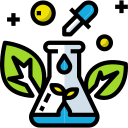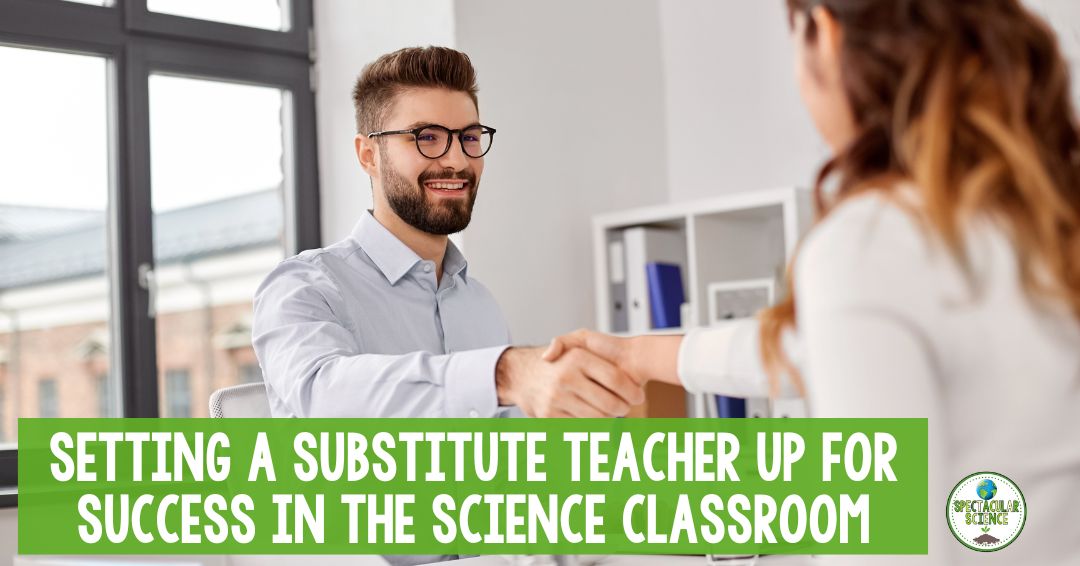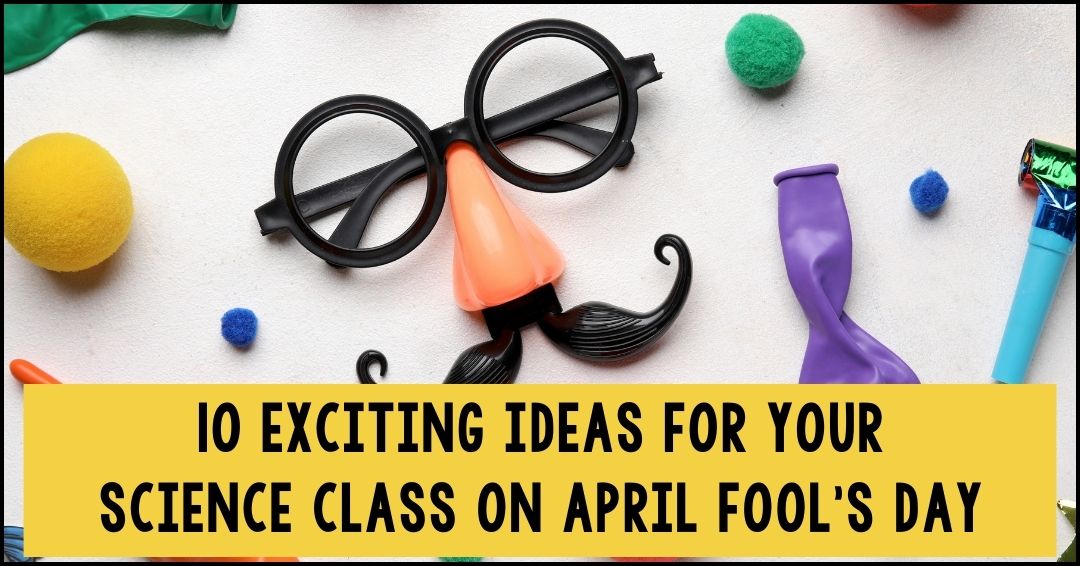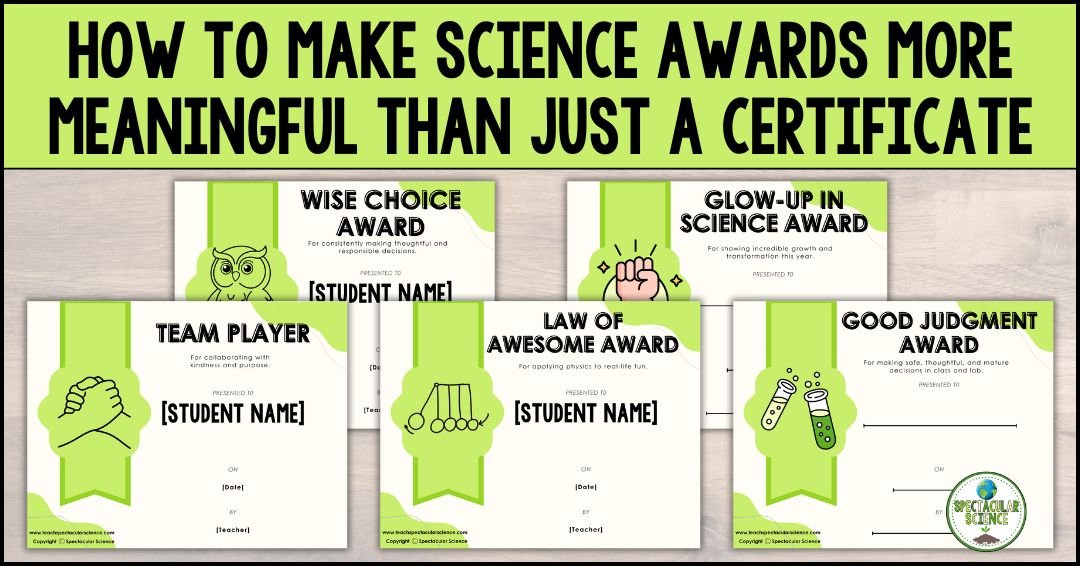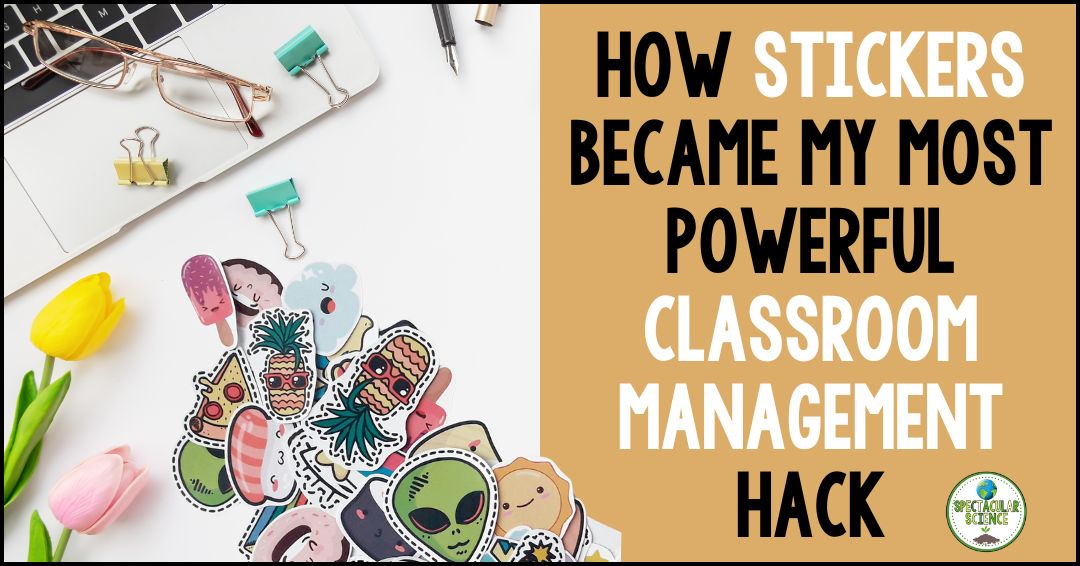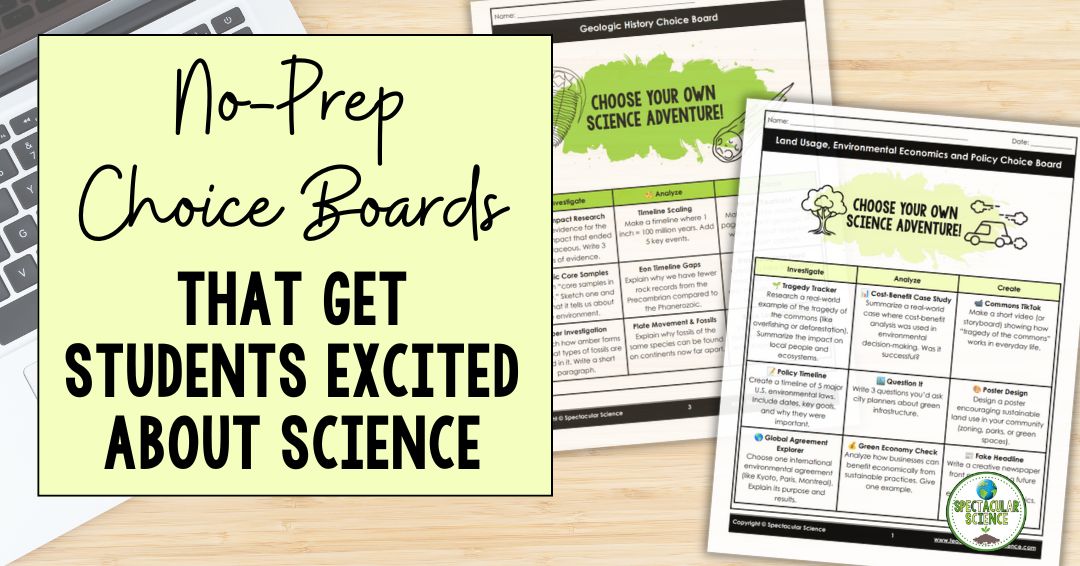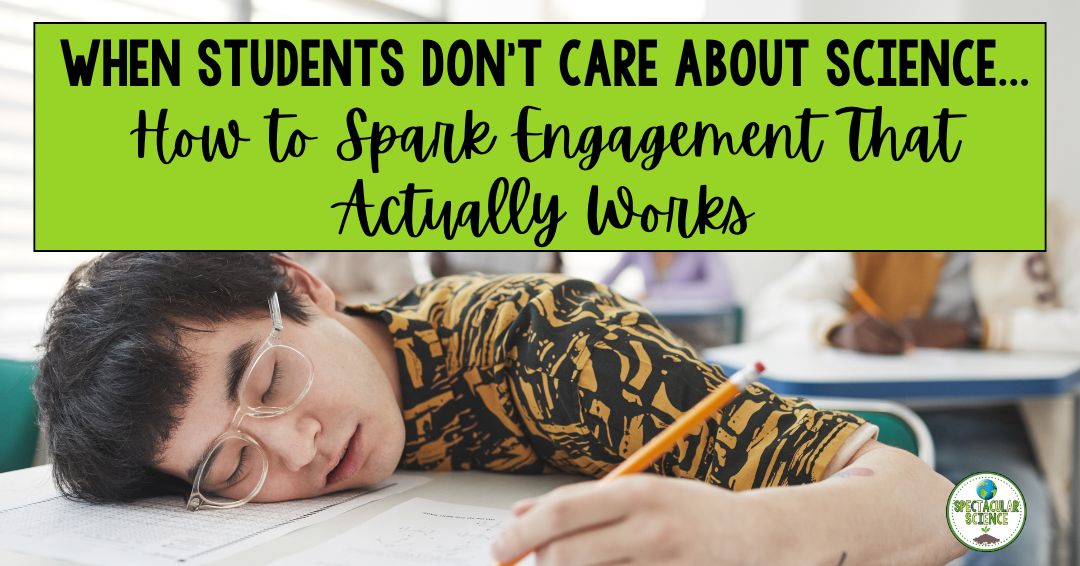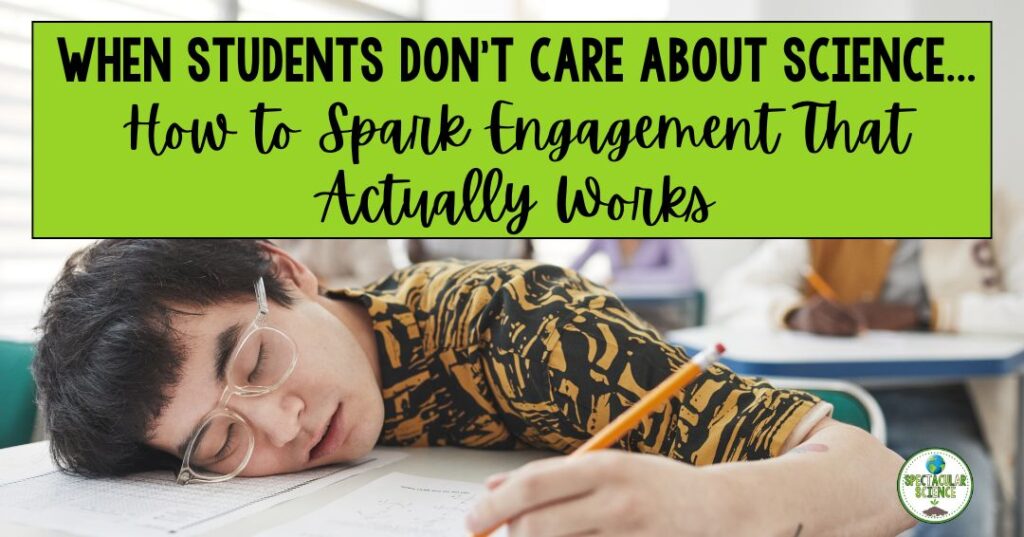
Let’s be honest—there are days when it feels like your students could not care less about science. You bring your best energy, you set up the coolest demo, and somehow…nothing lands. Blank stares. Shrugs. Maybe even a few “Is this for a grade?” questions.
I’ve been there—many times. Over the years, though, I’ve learned that when students seem disengaged, it’s not that they don’t care about science. It’s that they don’t yet see themselves in science. And once you can bridge that gap—connecting science to their world, giving them ownership, and letting them make discoveries for themselves—everything changes.
Here’s what’s actually worked in my classroom (and might just work in yours too).
1. Make Science Relevant to Their World
So I start every unit by connecting it to something current, familiar, or even right in their hands. When we studied human impact on the environment, my students investigated the hidden energy costs behind everyday objects using the Hidden Energy Costs Project.

They were shocked to learn how much energy goes into producing something as simple as a pencil or a granola bar—from raw materials to packaging to transportation and disposal. One student looked up the supply chain for her favorite brand of bottled water and said, “I never realized how much energy it takes just to make and move something I use once.”
Another student analyzed the production of a single t-shirt and calculated the total energy cost of growing, dyeing, shipping, and selling it. By the end, we had a whole-class discussion about whether “cheap” products really are cheap once you factor in environmental cost.
Science wasn’t just something to memorize anymore—it was something they could see in their daily lives.
And it doesn’t have to be a big project to make that connection. For example, around Thanksgiving, I love using my Eco-Thanksgiving: A Sustainable Feast Activity to help students explore the environmental impact of their favorite holiday foods. Students trace where their ingredients come from, how far they travel, and what it means for sustainability.
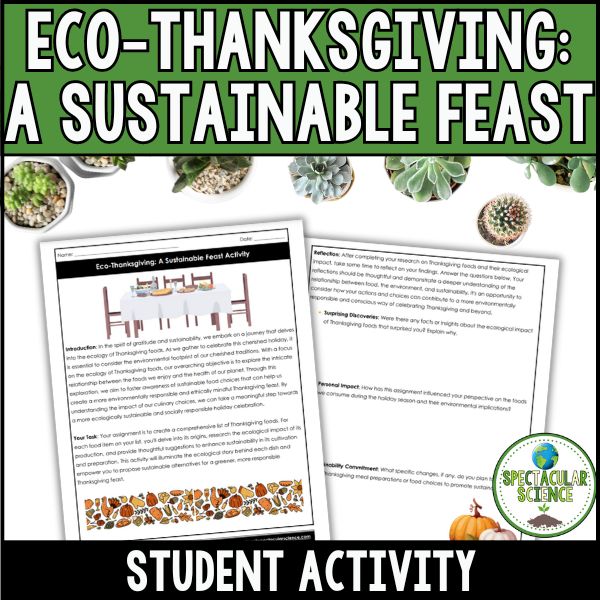
One student realized her family’s pumpkin pie ingredients came from five different states. Another compared locally raised turkey to one shipped from across the country and concluded, “It actually tastes better and has a smaller footprint.”
When students realize science affects what’s on their plates, in their air, and part of their daily lives, they start to care.
2. Give Them Ownership Through Choice
Choice is a powerful motivator.
I’ll never forget the day I realized I needed a better plan for early finishers. It was 7th period, and we’d just wrapped up a lab. Half the class was still testing, measuring, and debating results. The other half? Already done—and starting to test my patience instead.
That’s when I started experimenting with choice boards—and it completely changed my classroom dynamic.
Now, instead of asking, “What do we do when we’re done?” my students have a menu of creative, standards-aligned activities ready to go. They might design an infographic, create a model, record a short video, or write a creative story that demonstrates their understanding of the concept. The beauty is in the choice—it gives every student ownership.
I wrote more about how this system transformed my classroom (and made my life about ten times easier) in my blog post No-Prep Choice Boards That Get Students Excited About Science.

One of my favorite examples of student ownership comes from my Severe Weather Project, which I now share as a freebie. This project gives students 15+ differentiated options to explore extreme weather—from designing an emergency broadcast plan to analyzing the science behind hurricanes or creating safety infographics for their community.
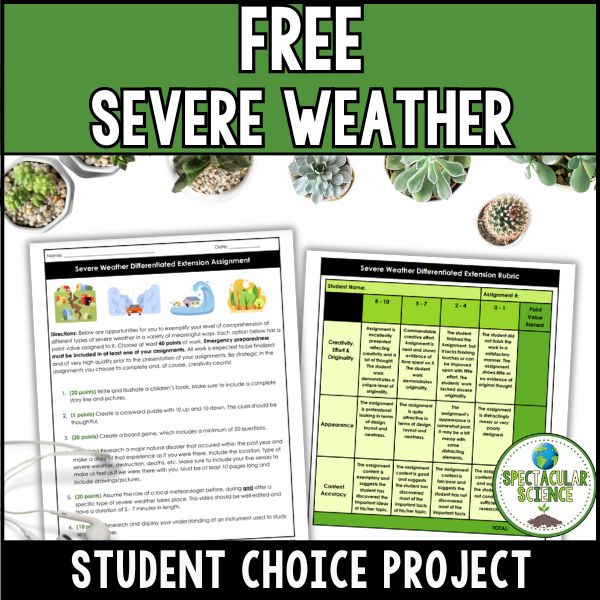
Even my students who “weren’t into science” got hooked when they realized they could choose how to learn and how to show what they knew. Some chose to film mock newscasts; others built 3D storm models or crafted infographics worthy of a meteorology conference.
When students have ownership, engagement skyrockets. They stop asking “Do we have to?” and start saying, “Can we try it this way?” And that’s exactly where we want them.
3. Let Them Discover (Even When You Don’t Have All the Answers)
One of my favorite classroom moments happened during my Design Your Own Graph Lab. Students were tasked with designing their own experiments, collecting data, and deciding how to visualize their results.
At first, it was chaos. “Wait—what should we test?” “Is this allowed?” “Can we do something with candy?”
And my answer was, “I don’t know—try it.”
That’s when the magic happened. Students tested whether M&M colors dissolve at different rates, how sound affects plant growth, and even whether handwriting style correlates with reaction time.
Was every experiment perfect? Not even close. But students were curious, invested, and learning by doing. And that’s what real science looks like.
If you’re hesitant to give up control, I wrote a blog post about this exact idea: Why Not Having All the Answers Is an Effective Teaching Strategy. Sometimes the best thing we can do as teachers is to model curiosity and let students see that science is about questions, not just answers.
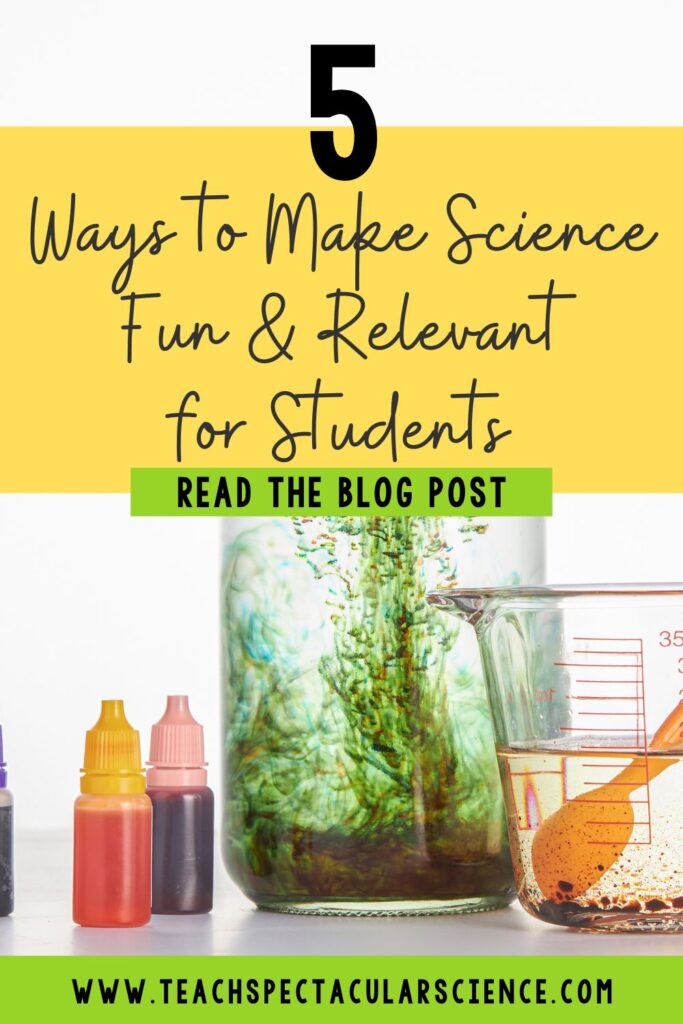
4. Build Curiosity Through Story
Humans are wired for stories, and teenagers are no exception. When I introduce topics like climate change or ecology, I don’t start with vocabulary—I start with a story.
For example, when teaching astronomy, I like to kick off the unit with a short video that really puts things in perspective. This video is my favorite—it slowly zooms out from Earth into the vastness of space, showing students just how small we are in the universe. Once they’ve had a moment to process that, I tell the story of how humans first mapped the stars and tried to understand our place in the cosmos. The combination of awe and story gets even my most skeptical students leaning in and asking questions.
For earth science, when teaching about plate tectonics and earthquakes, I tell the story of the 2011 Tōhoku earthquake and tsunami in Japan. I describe how the sudden movement of tectonic plates triggered the massive waves, the impact on communities, and the engineering challenges that followed. Students are often glued to their seats, asking questions about why some areas were more affected than others, how scientists predict earthquakes, and what could be done to prepare. Suddenly, fault lines, seismic waves, and magnitude aren’t just terms—they’re part of a gripping story.
Stories give context. They make content stick. And when students connect emotionally, engagement follows naturally.
5. Get Them Moving: Hands-On Learning and Experiments
Let’s remember that the best learning experiences are often the most memorable. They transcend the boundaries of textbooks, allowing students to explore, question, and discover for themselves. These activities aren’t just about imparting knowledge—they cultivate a spirit of inquiry that lasts a lifetime.
In my classroom, hands-on experiments are where students’ curiosity truly shines. I’ve had students design their own graph labs, test chemical reactions with safe household materials, and build models of the water cycle using spray bottles, sponges, and plastic containers. The moment they can touch, manipulate, and see science in action, engagement skyrockets.
I wrote more about this approach in my blog 100 Quick Hands-On Learning Opportunities in Science. Whether you’re short on time or looking for something to energize your class, these ideas let students take the lead, ask questions, and really experience the “aha” moments we all love to see.
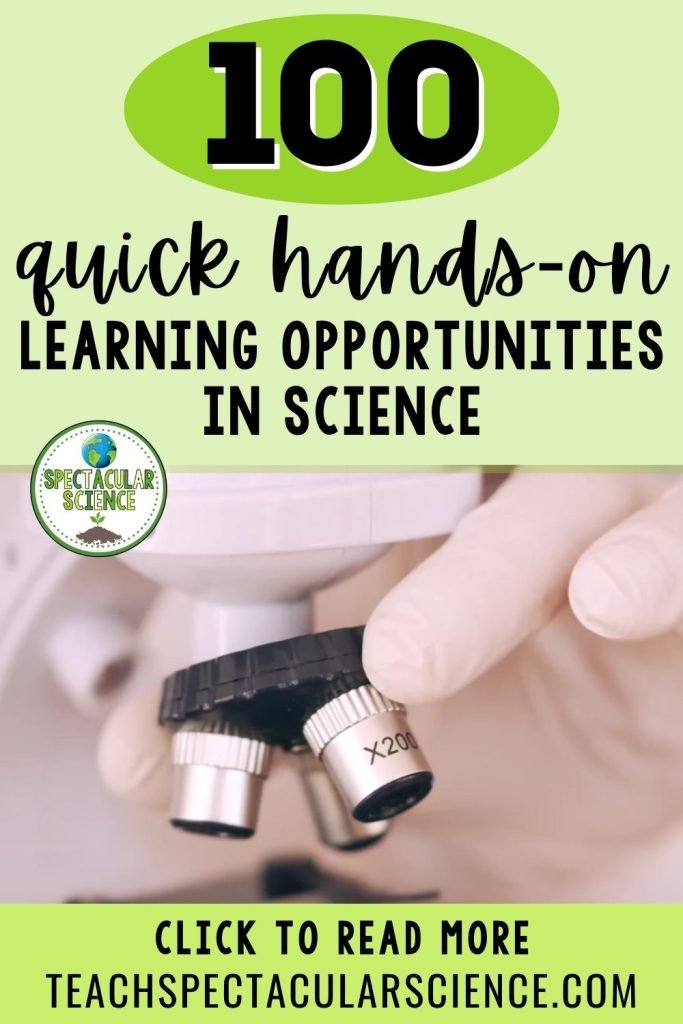
Hands-on learning doesn’t just make science fun—it makes it stick. When students can explore concepts themselves, they’re not just memorizing; they’re internalizing.
6. Remember—It’s Okay to Be Real
The truth is, we can’t force every student to love science. But we can create opportunities for them to see its value, discover their curiosity, and take ownership of their learning.
And along the way, it’s okay to be human. Admit when you don’t know something. Laugh when an experiment goes sideways. Celebrate when a reluctant student finally lights up with understanding.
That’s the real heart of science teaching—not perfection, but connection.

